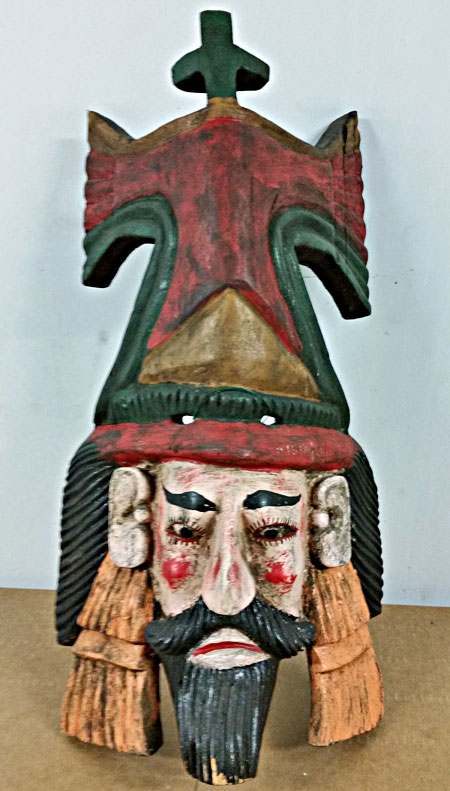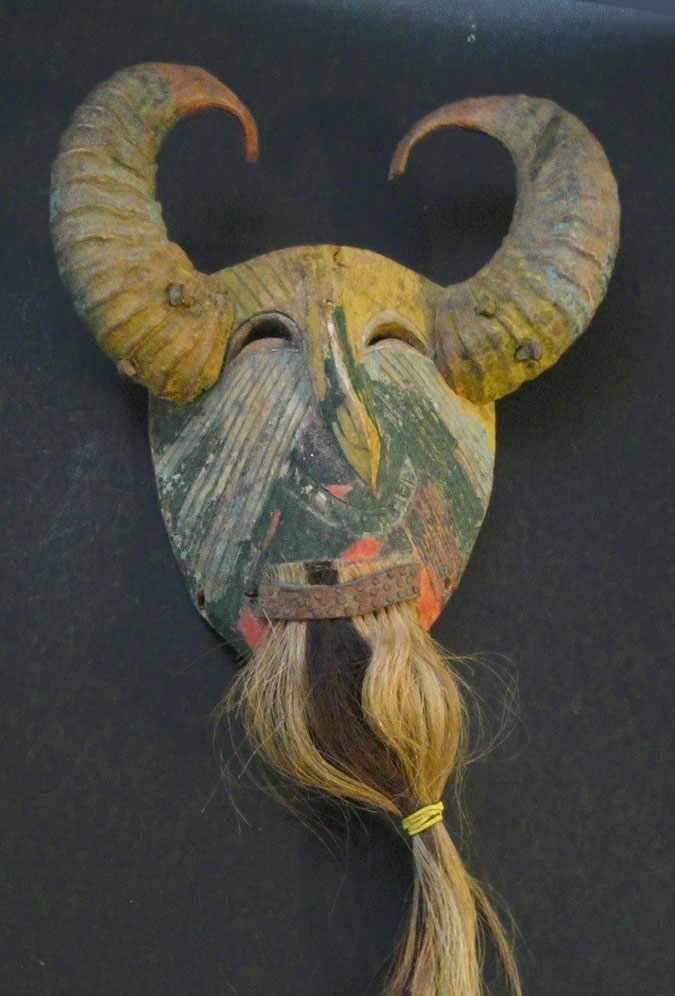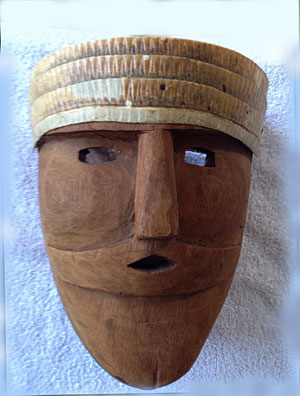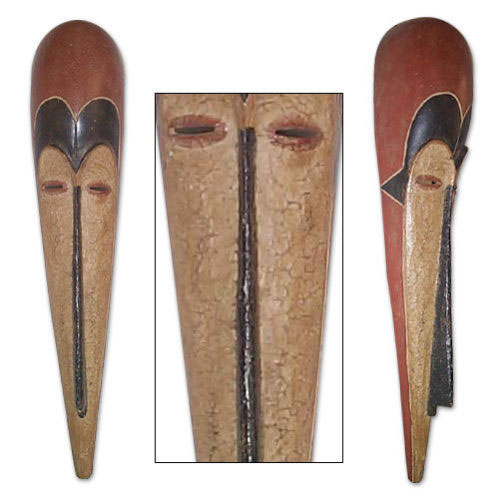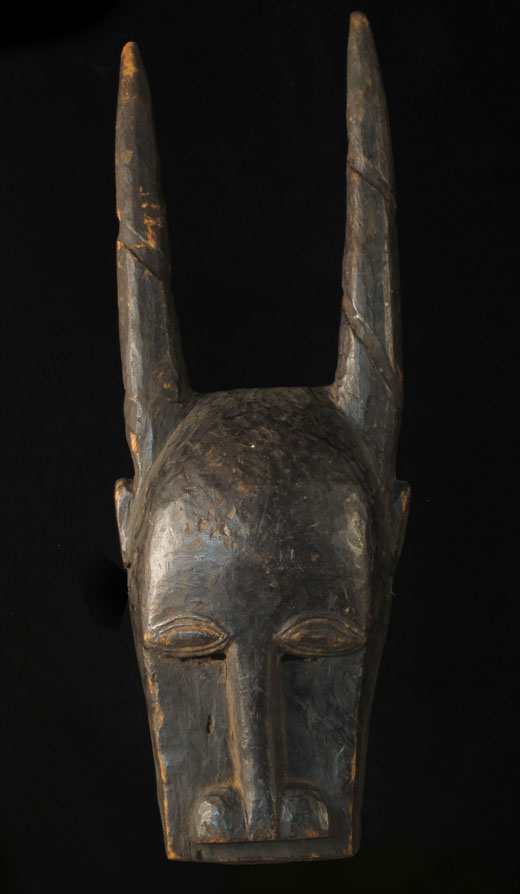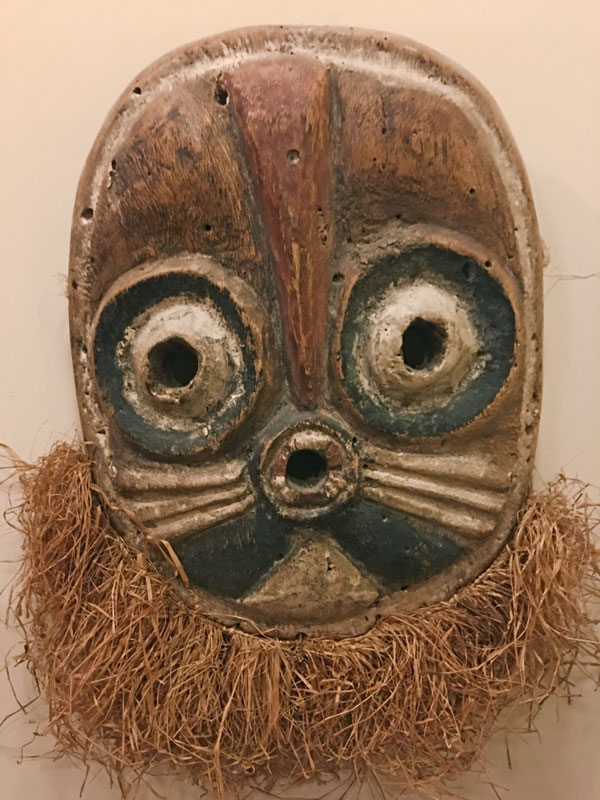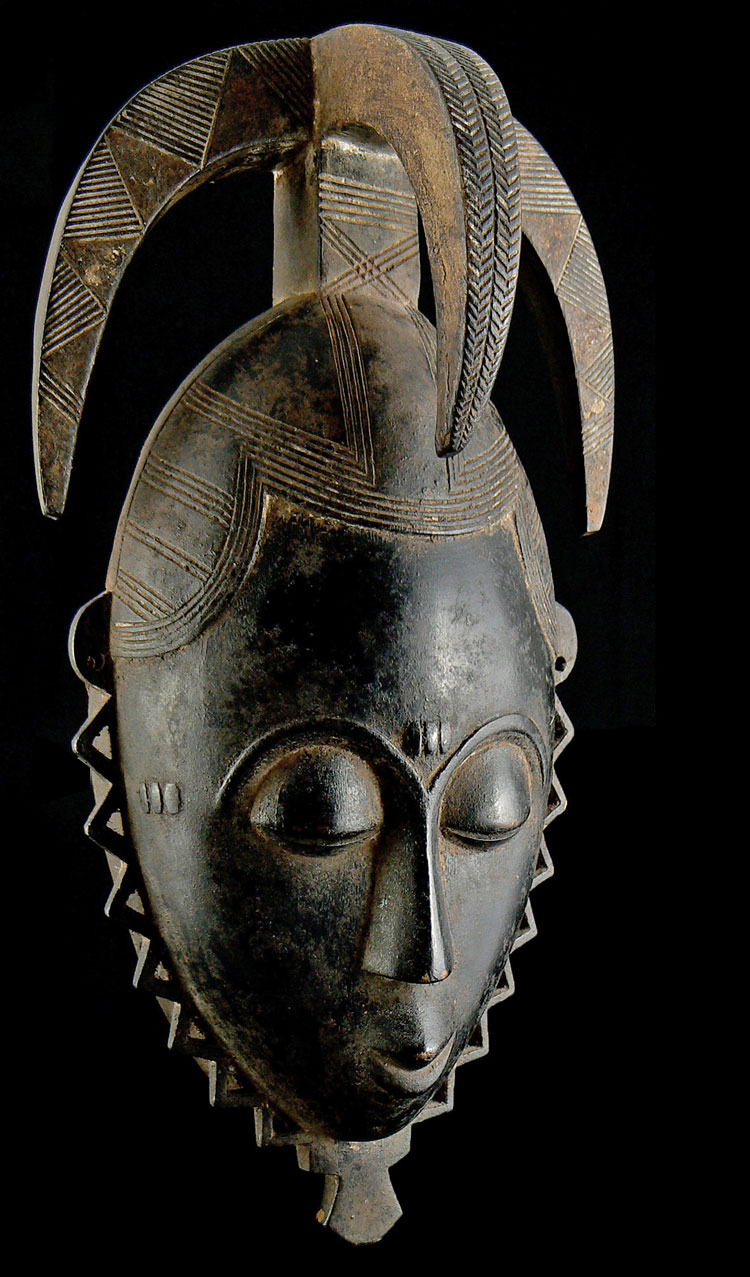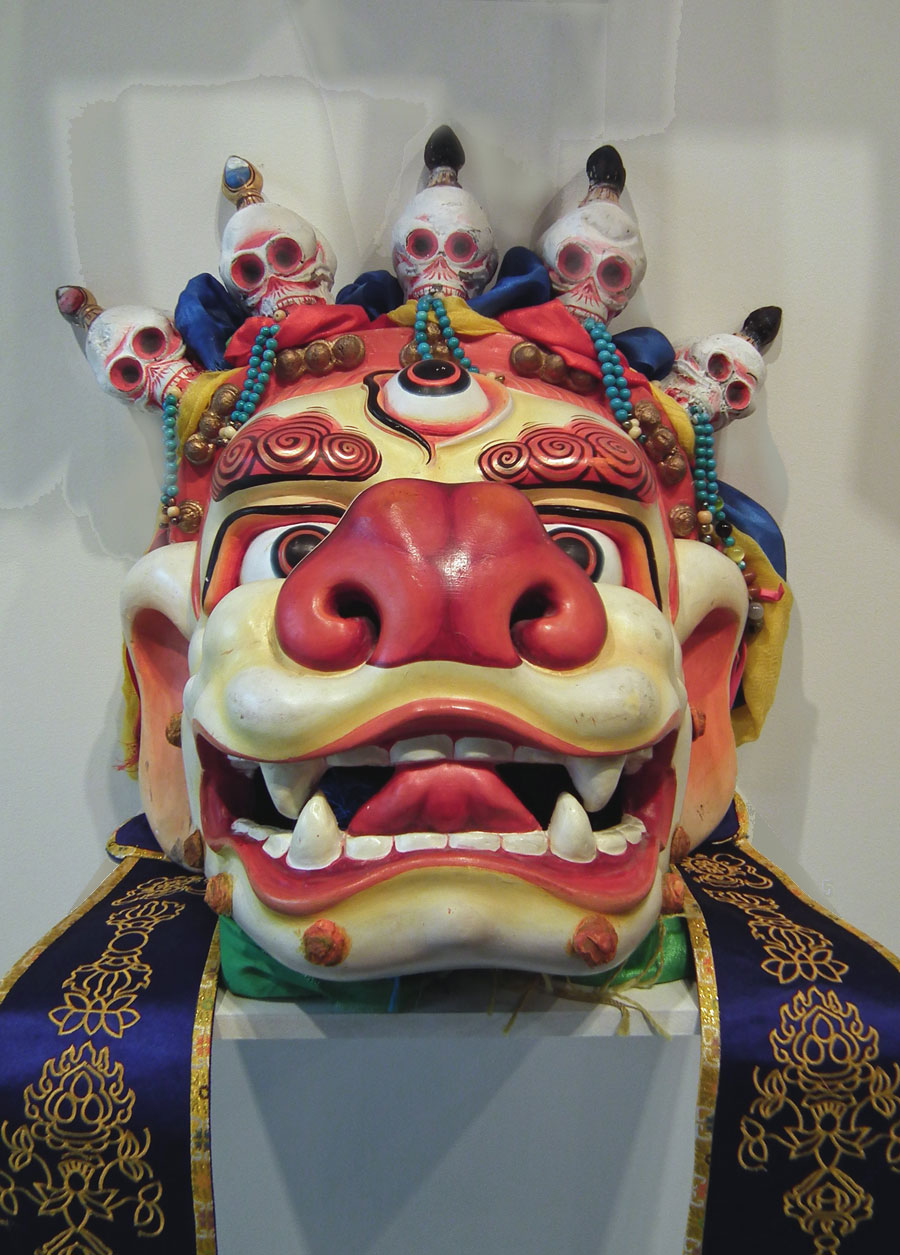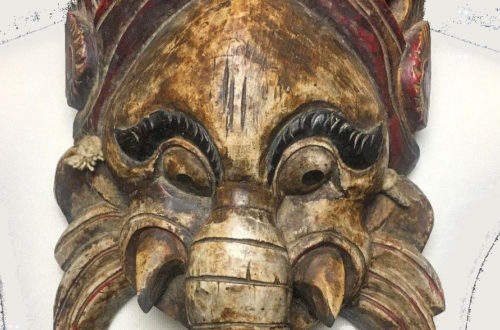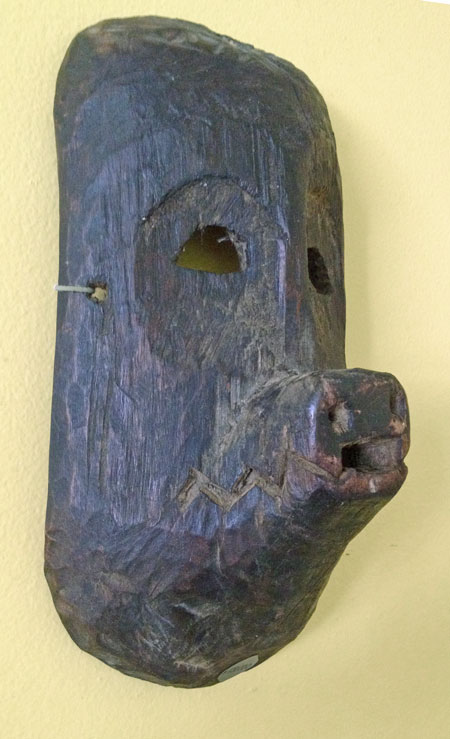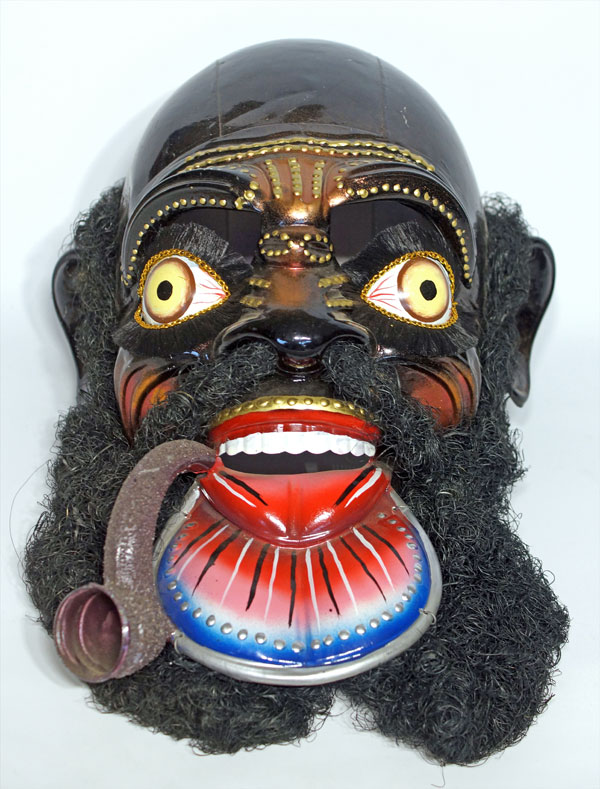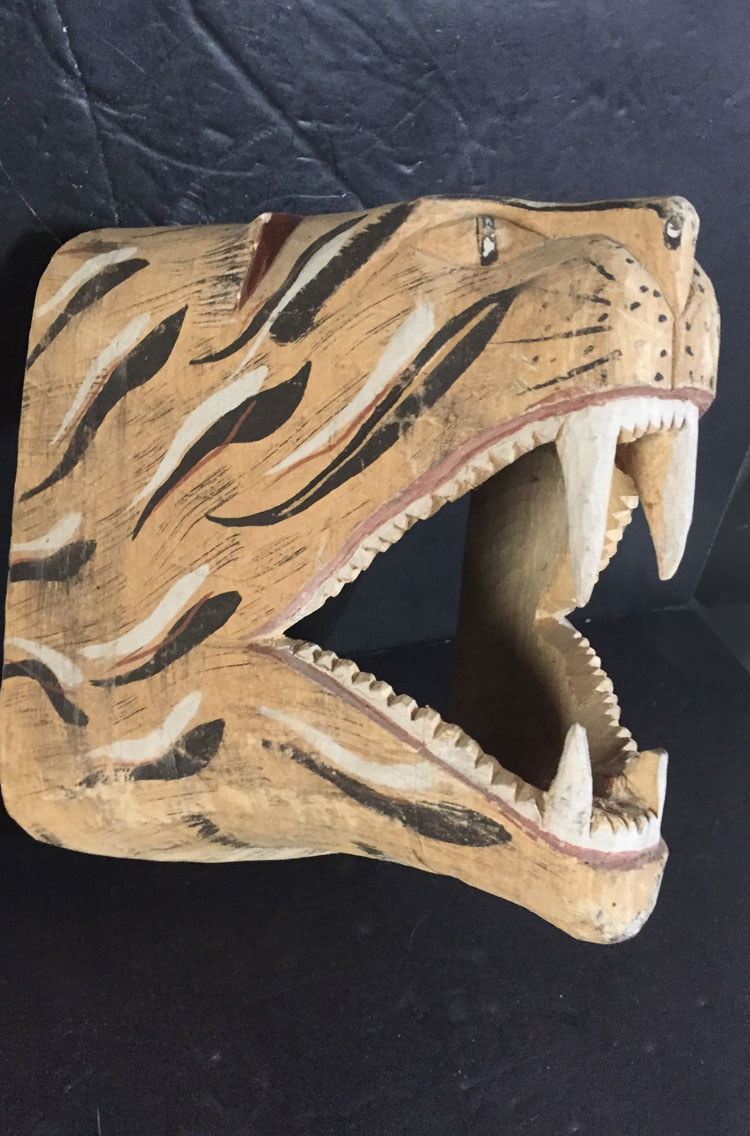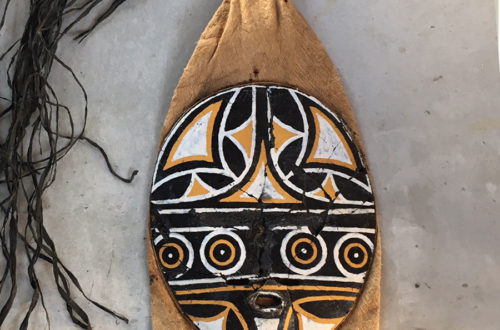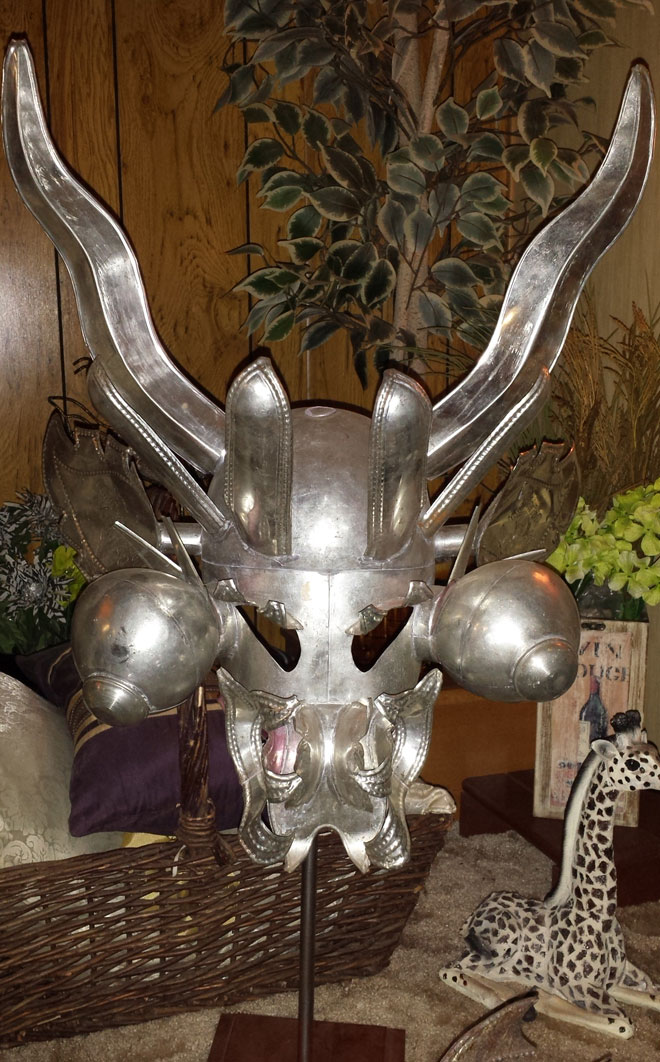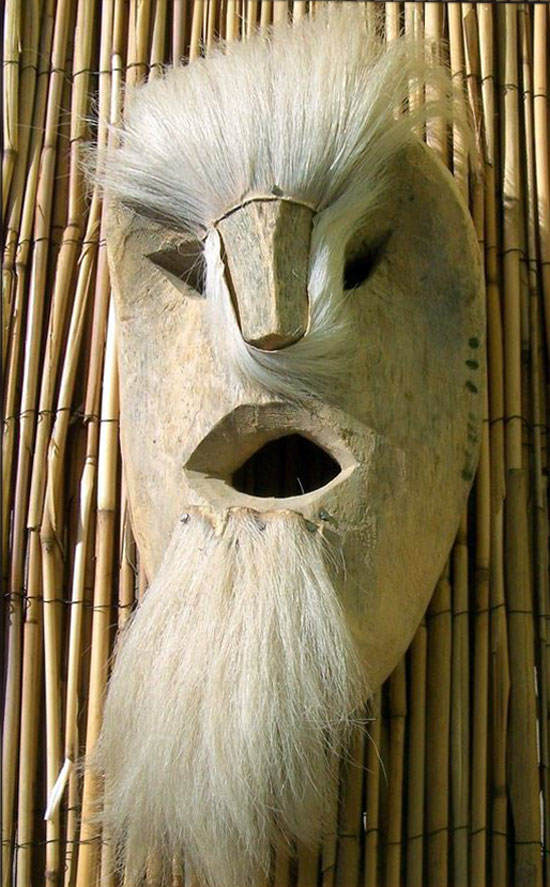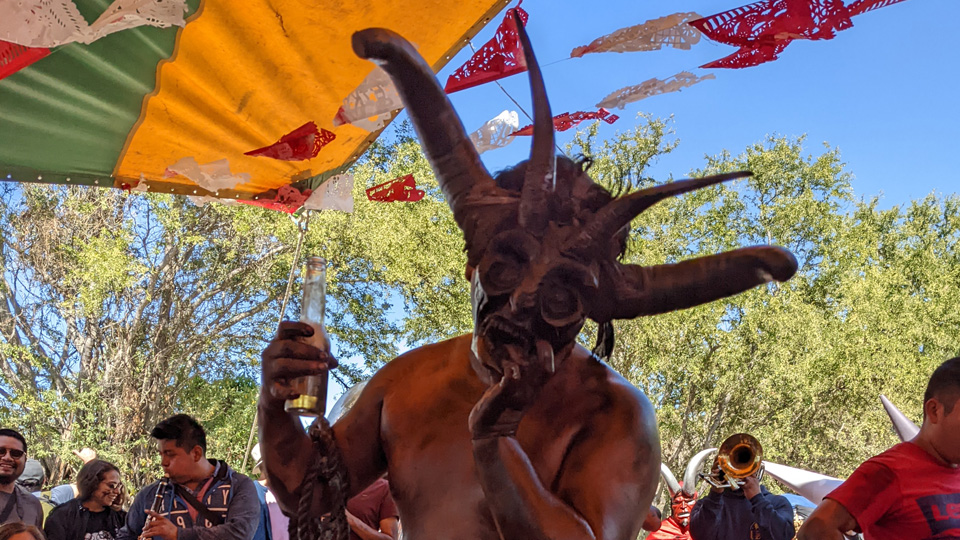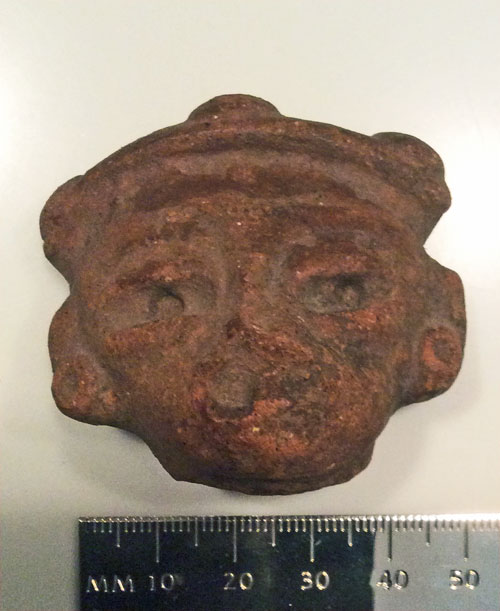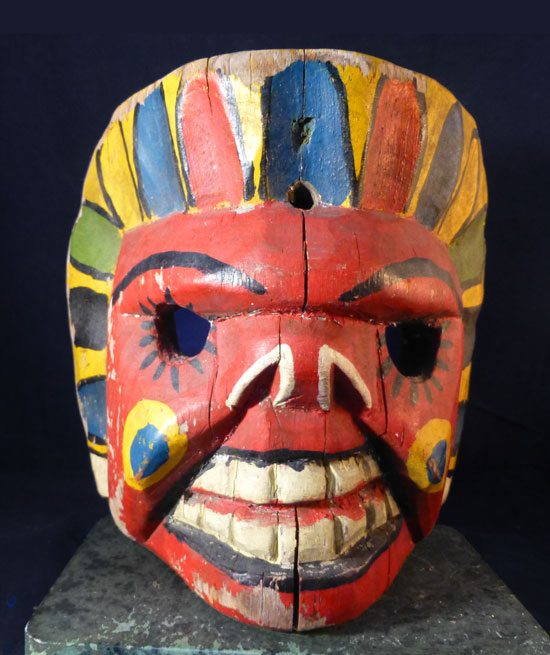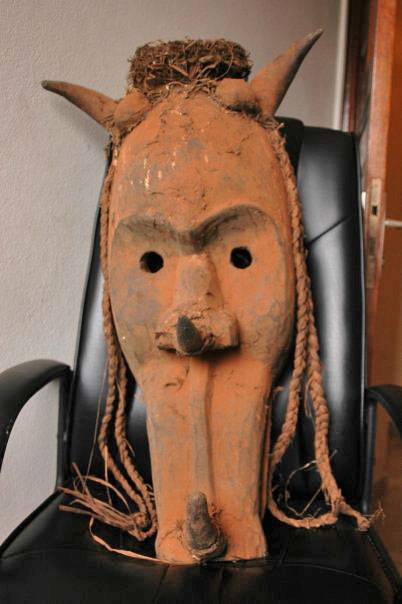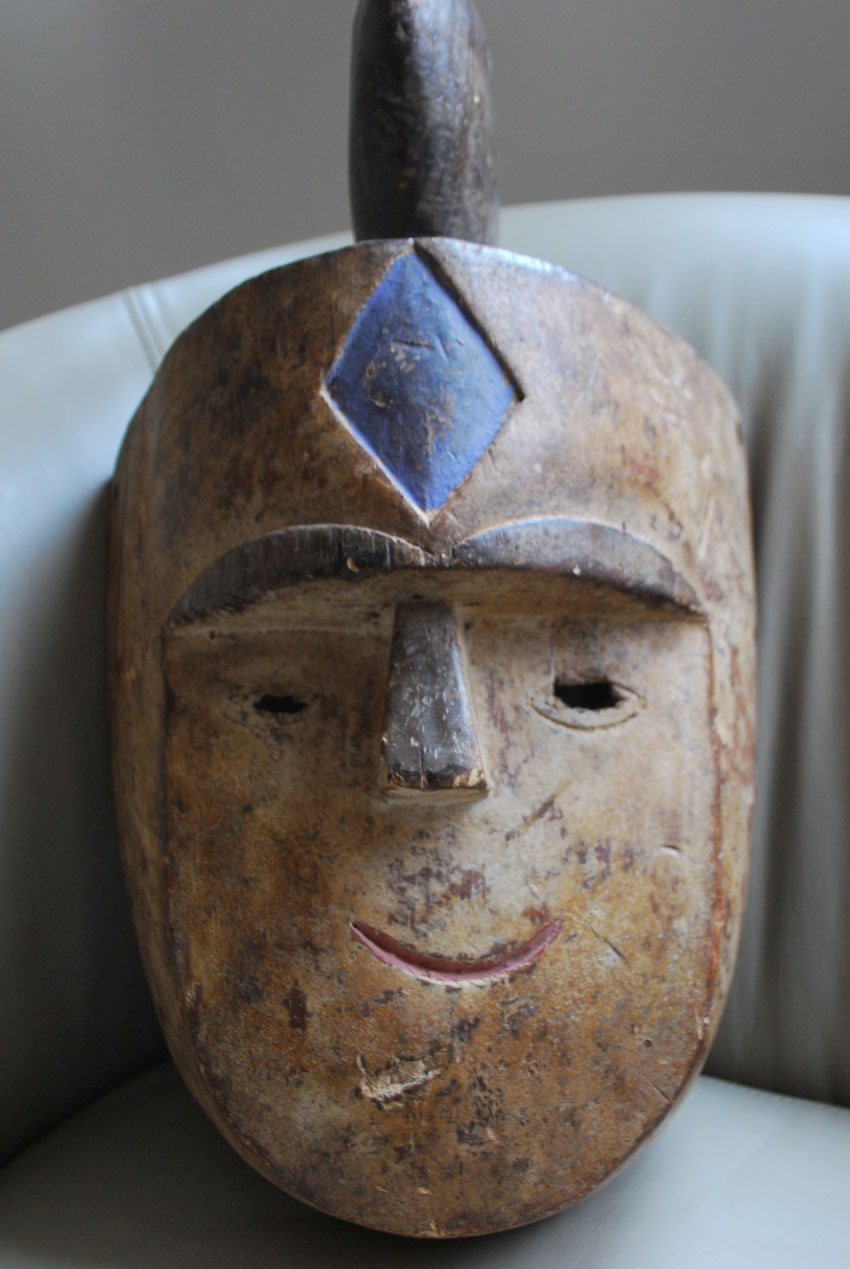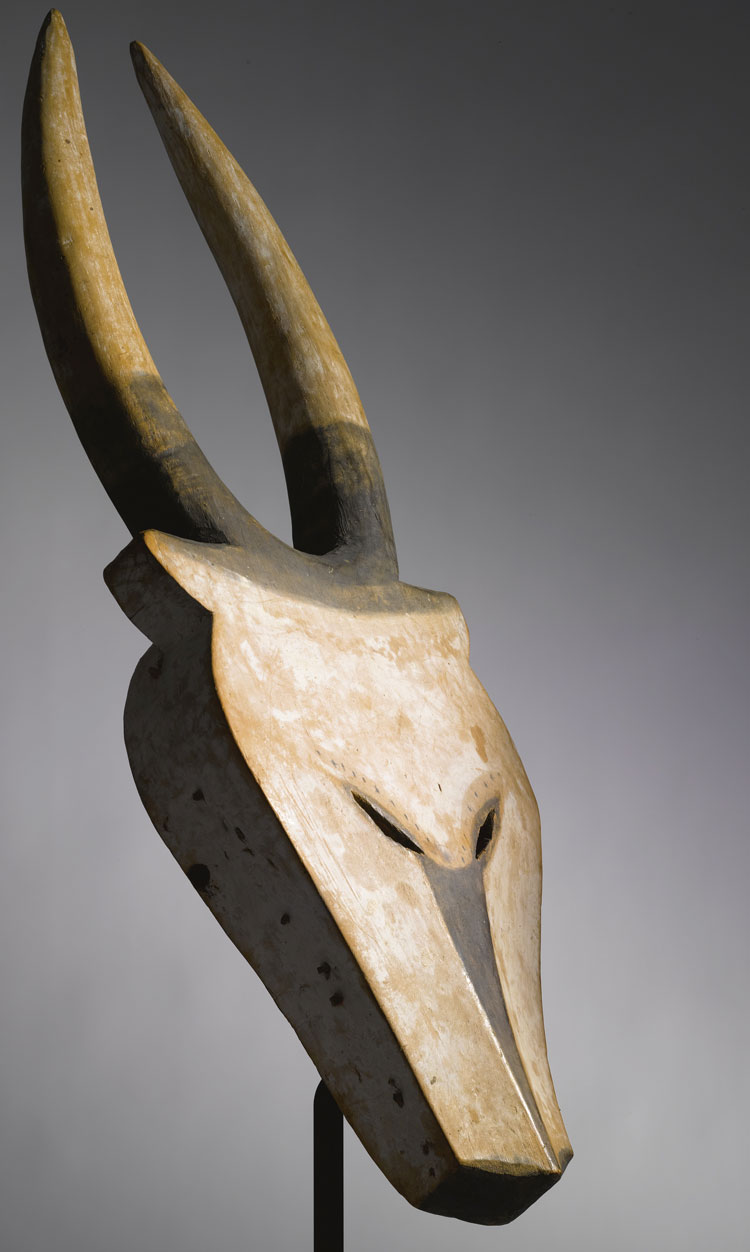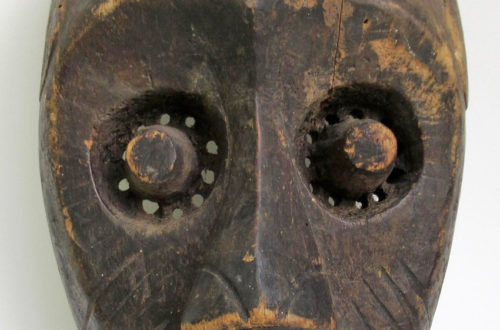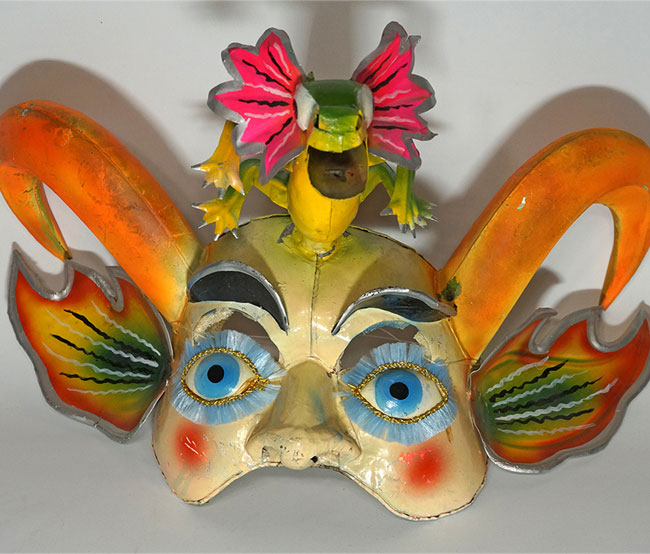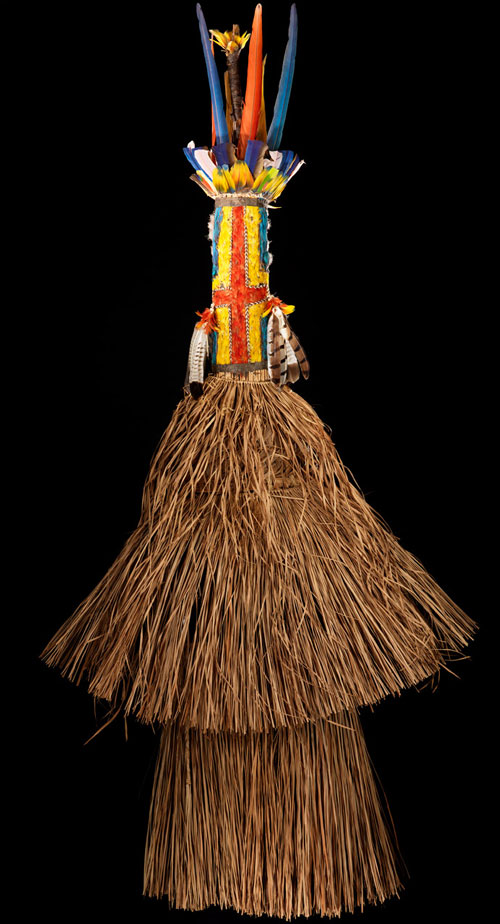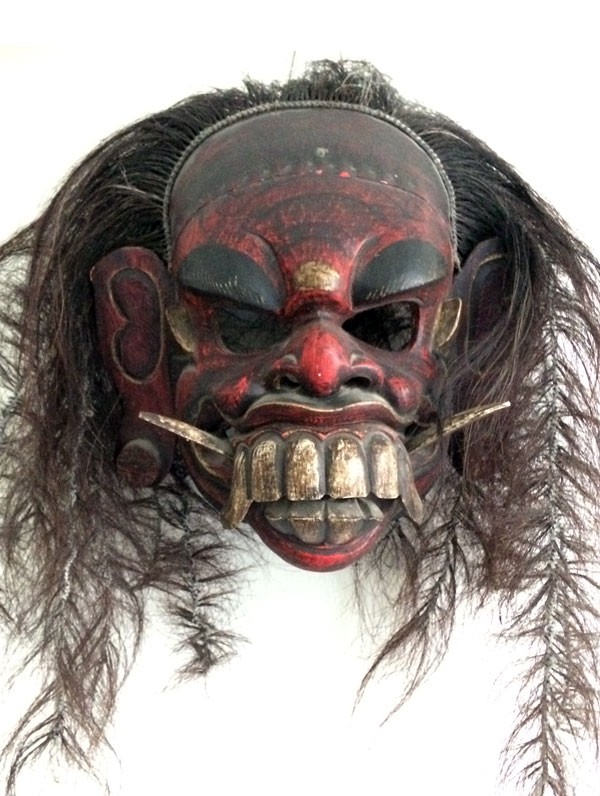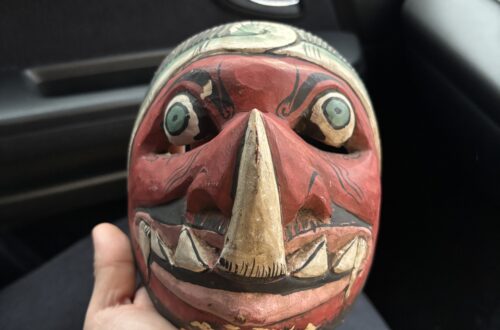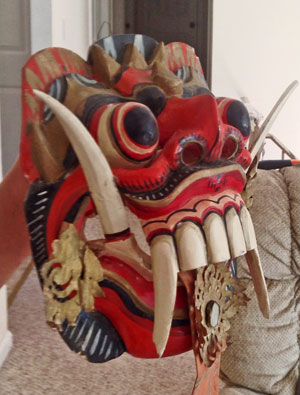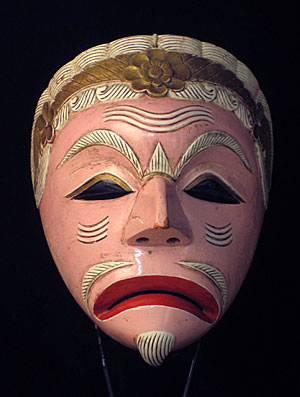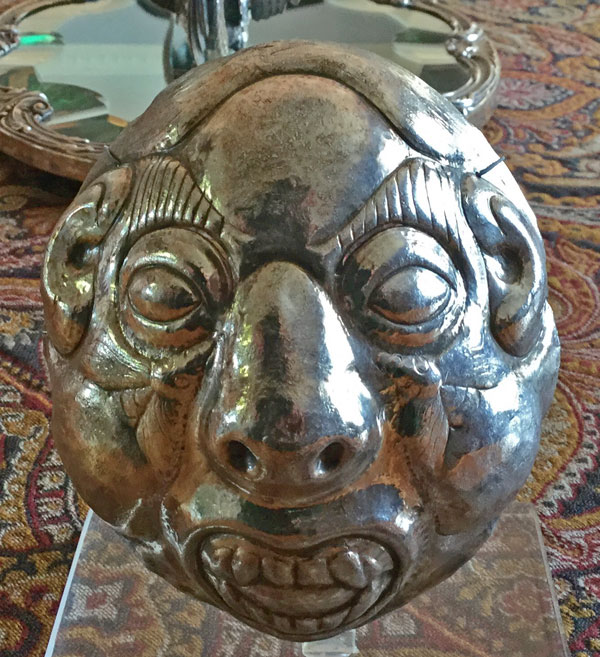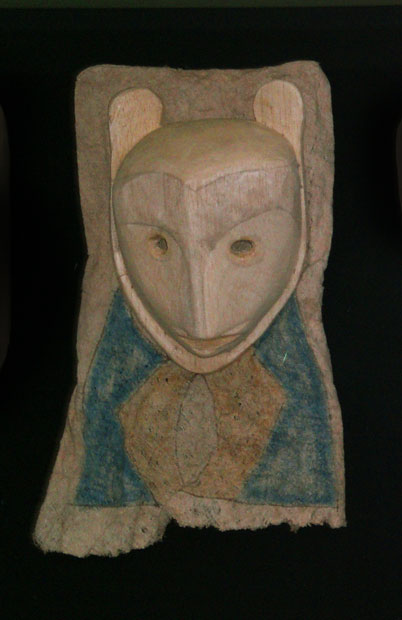Q: I’m trying to determine the age of this (Mexican?) mask. The external patina does not look incredibly old but the inside looks like it has had heavy use. It is very large at 34″ long and entirely carved out of a light and soft wood. The eyes are glass. To me this looks similar to glass eye masks said to be from the 1940s but I have not been able to find a similar figure from that period. Any help or suggestions would be appreciated! I have a few antique masks on display but not enough to call it a collection. I am interested in masks that are unusual…
-
-
It’s a buyers market
These two masks are called Ngils. Their design is unique to the Fang people who are spread out in South Cameroon, Equatorial Guinea and Gabon. The first mask is quite nice. The second (front view only) is beautiful, larger, and appears to be old and used. Actually, both have been made by talented professional carvers for sale to collectors. Maybe you could buy the first one for $100 and the second for $500 in this economic climate. Regardless, these two examples would look great in any collection of African traditional art. Most of the masks you see in tourist shops, eBay, thrift shops and garage sales are not nearly this…
-
Valuable Sri Lankan mask
Q: I could use your advice on something. My contact in Sri Lanka found this mask, formerly in a Sri Lankan museum, and now for sale by the family that originally owned it. It goes back about 50-60 years. With my guy’s commission, they are asking $1250 plus shipping. That seems high to me. What do you think, informally? 1008 A: I think the $1250 price is about right. There are museums who would love to display this piece. Carving quality is excellent, though the colors are faded. Look at the big Garuda on page 85 of The Letts Guide to Collecting Masks. It’s 1983 selling price would be about…
-
Black Moreno from La Paz
My partner, Troy, will be in Bolivia looking for masks in a few weeks. So I thought you might enjoy seeing a very nice example from Aaron’s collection. The character is called “Moreno” and he is paraded in the Senor del Gran Poder festival of the capitol, La Paz. Other cities in Bolivia have somewhat different celebrations, but they all use masks of incredibly fine workmanship, many of which are made of sheet metal like this one. Masquerade in Bolivia is as spectacular as those of the Lenten festivals in Bavaria, the dance dramas of Bali, Japanese Noh theater, and our own Northwest Coast Indians. Let’s all wish Troy well…
-
New Tarahumara mask
Q: I have been hesitating about whether to buy these masks that are purportedly from the Tarahumaras. I have never seen anything like them before. They are 12-15 inches high. What do you think? Christophe, 1006 A: They are from the Tarahumara who live in the remote Copper Canyons of southwestern part of the state of Chihuahua in northwestern Mexico. These isolated Indians are the fastest long-distance runners in the world. The masks are new, but traditional in style. You can see one that is older and has a little color on page 115 of our book, Masks of the World, by Ibold & Yohn. B Save Save
-
Repro of Guatemalan Jaguar mask
Q: Can you give me a little more information on the attached mask. Value, type, origins. Laurie, 1005 A: Jaguars are a character in several traditional dances performed by indigenous Guatemalans, who are decedents of the Maya. This example is well carved and nicely painted. However, it was made to be sold, either to tourists or exporters. This lowers the mask’s value. C+ The good news is that people with limited budgets can find excellent reproductions of traditional dance masks at tourist shops and on eBay, enabling them to assemble collections that are almost as beautiful as those in museums.
-
West African mystery mask
Q: I have a large mask from up-country in the Ivory Coast. It was purchased in 2009 in the city of Man. I believe this is the original article and not a tourist “knock off”. I’m looking for more information as to origins and price. I’ll send you a side and a rear view soon. Dave, 1004 A: Yeah, it looks real to me as well. Since the Dan people are all around Man in the West of Ivory Coast, and since the culture occasionally uses large masks, let’s start with that possibility. Send more pics when you can. I hope someone who specializes in African material will help us…
-
Euro-Mexican mask
Q: I purchased this mask about 10 years ago from an online auction where it was described as a Mexican “Ranchero” mask. Unfortunately, I don’t remember much more detail from the listing. I was hoping you, or someone who visits your site, might recognize this style of mask, and perhaps identify the region it came from. It’s certainly the work of a highly skilled craftsman. The wood is thick, but very light, and there are four heavy duty staples around the perimeter for straps. The inside is smooth and nicely contoured for comfort. I don’t think it was ever used, but it was definitely made to be worn. Dan, 1003…
-
Bad guy from Bali
Q: All the art gallery told me when I bought it in 94 was that it was from Indonesia. I paid about $350 for it at that time. I know my melon of a head doesn’t fit in it, but a slightly smaller head would. Its made of wood, hand painted, with horse hair. That’s about all I know. It looks super cool, that’s for sure. It freaks most people out when they notice it on my wall. Chris, 1002 A: There are lots of masked characters in the Topeng saga, one of the famous dance dramas performed on the island of Bali. This is one of the bad guys.…
-
Old Bolivian funeral mask
Q: I acquired this silver mask in Bolivia about 30 years ago at a price of ca $100. At the time I was told that it is a funeral mask worn by the living who attended a funeral. Size of the mask is 5,5 by 4,5 inches. Any information that you are able to provide will be greatly appreciated. Gideon, 1001 A: At that small size and without eye holes, this is not something to wear. It would appeal to tourists and some collectors. There is a similar, but larger, mask on page 158 of my new book, Masks of the World. It says “this Pre-Columbian mask is 8″ high…

